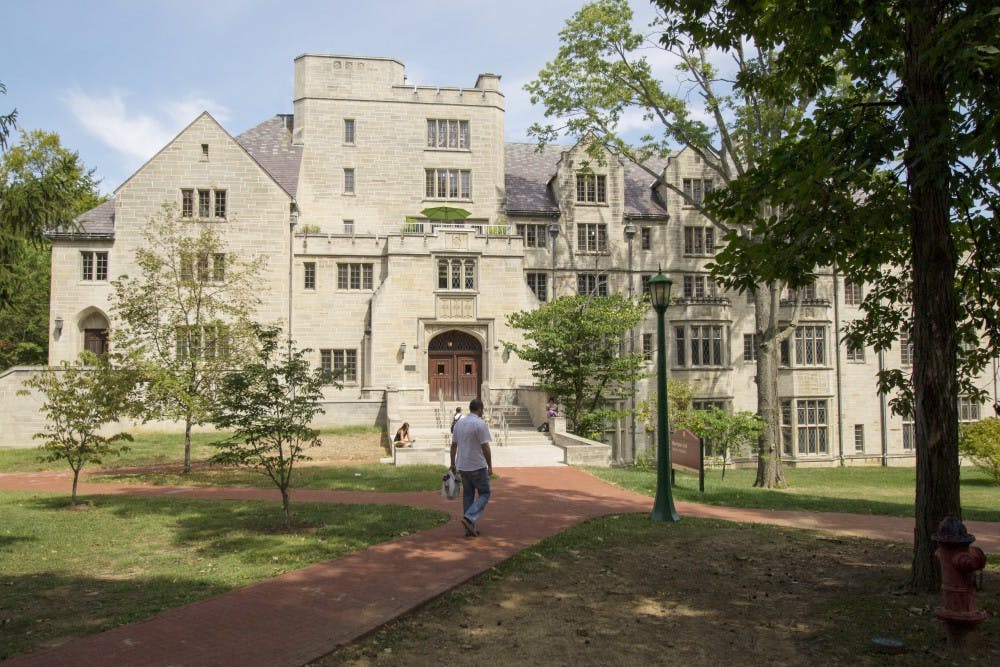When the Kinsey Institute was founded as the Institute for Sex Research in 1947, founder Alfred Kinsey sold his personal collection of sex-related artifacts, photographs, film, video and art to the institute for just $1.
This was the beginning of the Kinsey Institute’s Library & Archives, which continues to house artifacts of sex art and history 71 years later.
Marie Metelnick, communications specialist at the Kinsey Institute, spoke with the Indiana Daily Student about the collections and their significance.
The Indiana Daily Student: So what exactly is in the Kinsey Library?
Marie: The Kinsey Library and special collections is one of the largest collections in the world of material culture related to human sexuality.
IDS: What kinds of materials are in the library?
Marie: The collections encompass print materials, film and video, fine art, artifacts, photography, and archives.
IDS: What kinds of archives do you have?
Marie: The archives contain correspondence, manuscripts and unpublished materials from a variety of prominent sex researchers, like Dr. Alfred Kinsey and Masters & Johnson, and from institutions and organizations like the Society for the Scientific Study of Sexuality and EROS magazine.
IDS: What about art, photography, film and video?
Marie: The art and artifact collection contains about 7,000 items from five continents and covers 2,000 years of human history. The photography holdings are the largest part of the special collections with more than 80,000 prints and negatives dating from 1850s to today. The video collection contains about 4,000 items from the 1970s to today and contains groups of films on topics like historical stag, peepshows, sex education, animal sex behavior and more.
IDS: What is the significance of all of these materials?
Marie: Dr. Kinsey began collecting books, art and artifacts related to sexuality as another form of data to study in addition to the interviews that provided the data for the famous Kinsey reports. Today’s collections continue to provide a better understanding of human sexual behavior around the world and across time.
IDS: What can these materials be used for?
Marie: Materials in the library and collections can be used for research about anything from human sexuality and gender to reproduction.
IDS: About how many items are stored at the library?
Marie: About 100,000.
IDS: Do you have any favorite items?
Marie: I’d say the collection of stanhopes. These are what we might call ‘dirty pictures’ that are inscribed in miniature on the surface of everyday items. The images are so small they have to be seen through a glass lens, so they are hiding in plain sight. They were put on the ends of walking canes, pocket knives, watches and other small objects. They are very rare and we have a good selection of them.
IDS: What do you think is the most important or significant item at the library?
Marie: To be honest, the collection has so many special items that it’s not possible to choose one as most significant. The significance of the collection in general is that it provides a place where these objects can be preserved for posterity, when it’s not possible for them to survive elsewhere. Some people send us items or collections that they feel will be lost or destroyed after their death because they have sexual content, and they know the Kinsey Institute will be a safe home for these items and they will be available for future generations to study.
IDS: How and when did the collection get its start?
Marie: As Dr. Kinsey began collecting data from interviews in the 1940s, he also began collecting art and ephemera. When the institute was founded in 1947 as the Institute for Sex Research, Dr. Kinsey sold his personal collection to the new institute for $1, and that became the basis of the special collections we have today.
IDS: Has its purpose changed or developed since then?
Marie: It really hasn’t. We still view the collections as data for researchers studying the history and dissemination of human sexual culture.
IDS: What do these collections have that other facilities can't offer?
Marie: Many of the materials in the special collections cannot readily be found elsewhere, especially historical items like cartoons or books printed on newsprint that just did not survive the passage of time.
IDS: What do you hope people visiting will be able to take away from the library?
Marie: We certainly hope that the scholars and students using the library will find interesting material for their research that illuminates human sexuality for them and their audience in new ways.
The Kinsey Institute Library is open from 9 a.m. to noon and from 1 to 4 p.m. Monday through Friday, according to its website.
Metelnick said Kinsey also has a historical exhibit that is open from 9 a.m. to 5 p.m. on weekdays in Morrison Hall.
The special collections are open by appointment only, according to the Kinsey website. Students and researchers can contact the library at libknsy@indiana.edu to make an appointment.




